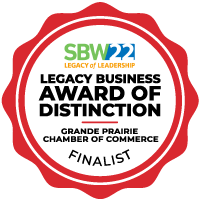Developing a brand identity for a company is no small responsibility, even for a small company. Clients often wonder, though, why does a branding with us cost what it does? The scope of the project, and ultimately the value, is affected by a number of factors. We’ll cover a few of the key ones in this article to provide you with some insight into what we consider when pricing a branding project.
Size of Company
The size of the company plays a role in the value of a brand. First, a larger company typically has more stakeholders to please, more regulations and policies to follow, and must appeal to a broader internal audience. Also, by nature, larger companies tend to be more diverse in their service offerings and the mediums they use to advertise, which increases the number of things that must be considered in how the brand is used. And last but not least, a larger company stands to benefit more from a brand simply by the economics of scale. The results they see from the branding are multiplied by a much larger customer & employee base, increasing the value the brand provides to them over time.
Depth of Engagement
Further to the size of the company is the depth of the engagement. A brand is a core element of your company culture, systems, and way of doing things. As such, it starts at the very core: with your vision, mission and values. Deep branding engagements involve helping a company work through these from the ground up at the executive level. A shallower engagement applies a visual treatment to materials when these core elements are already well-defined. The deeper the involvement, the more valuable the branding engagement will be.
Size of Target Region
The size of the region the company serves directly affects the price of the branding. A small business serving only Grande Prairie has much less to consider than a national business serving customers across Canada. The larger the region, the more competition and the more diverse the customer base will be. As a result, it will require more time and strategic thinking to develop a unique and competitive brand image across a larger service area.
# of Distinct Target Markets
The more distinct target markets a business services, the more complex it will be to develop a suitable brand image. Take for example, a Community College. They may serve an audience that ranges from grade school students practicing music to mature students in their 70’s who are returning to learn new skills, and everything in between. With such a broad market, developing a brand identity that is equally appealing to all of these demographics is very challenging. Like the size of the region, this translates into much more effort required to research, develop and test brand concepts during the project.
Mediums Used to Advertise
The number of mediums, and the type of mediums used, affects the price of the branding directly. A small business which only has business cards and a brochure is much simpler to develop a brand for than a regional hotel chain that uses almost every medium available to advertise. The type of medium also affects the price, as some mediums are more costly to develop materials for than others (e.g. television or radio.)
Number of Sub-brands / Sister Brands
Some companies have sub-brands or sister brands for specific products, services or divisions. FedEx is a good example of this, where they have logos in different colors to denote the various divisions of their business. The more sub-brands a business has, the more complex the branding will be, particularly if the parent brand is also being designed from scratch. This requires much more consideration to create a brand that can flow between the various divisions, and also increases the complexity of the documentation and templates that support the brand.
Final Delivery Format
Branding projects can vary greatly in terms of what the final product will be. In smaller projects, it may involve providing a set of logo files and a guide on how to use them. On larger projects, it may involve developing templates for all of the advertising materials, plus rules for developing new ones. In some projects, the brand standards are documented in a printed manual, in others, they may be built as an editable web-based wiki. The final format for the deliverables varies widely based on the needs of the company, but has an impact on the value of the project.
Implementation
After the brand is developed, it needs to be implemented. This can range from re-printing sales materials to new signage, website redesign, updating current advertising, and much more. This includes not only costs for 3rd party services such as printing, but the project management and co-ordination to handle everything. In addition to the physical aspects, training is also a consideration. You may wish to have us train your staff and/or designers on the proper use of the new brand. The degree in which we assist you with this will affect the price.
Launch
And last but not least, after launching a new brand, both employees and customers need to know about it. This might mean a launch campaign to introduce the new look of your company to the marketplace, or an internal event to present the new brand to your employees. The cost of the launch is also affected by the same factors as the brand itself. If you’re engaging us to help you with this, it will also add to the budget required to complete your branding project.
Conclusion
This list is by no means exhaustive, but represents some of the key factors that affect the price of a branding. We take all of these into consideration when estimating the value of a new brand, and now you can as well!










